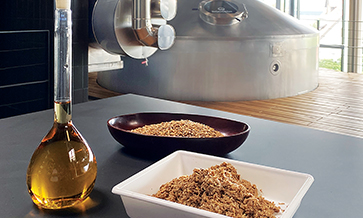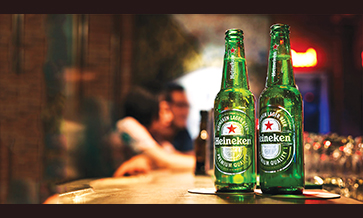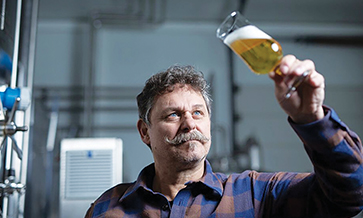The wine and spirits industry is a thriving market, with a global appeal and a rich history. However, it is not immune to the pervasive threat of counterfeiting. Counterfeit wines and beverages pose a significant danger, causing a loss of US$ 3.18 billion in direct sales and costing governments US$ 2.61 billion in tax revenues.
The impact of counterfeiting reaches several levels: undermining consumer trust, damaging brand reputation, and even posing potential health risks. Moreover, counterfeiting disrupts supply chains, affects brand equity and undermines efforts to maintain product integrity.
The luxury wine and spirits market reached a value of US$ 970 billion in 2019. It is projected to witness an impressive growth rate, nearly doubling in size by the year 2027.
With the help of modern technology, counterfeiters have been able to pull off frauds that would’ve looked impossible a decade ago. And by leveraging e-commerce platforms and social media, they can distribute their products across the world as well. Some of the most common techniques used by counterfeiters are:
- Bottle recycling:Counterfeiters collect empty authentic bottles, refill them with inferior or fake products, and re-seal them with counterfeit labels and closures.
- Label forgery:By using high-quality printing techniques and materials, counterfeiters create fake labels that closely resemble prestigious wine producers’ branding and design.
- Blending and dilution:One of the most widely practised counterfeit techniques is to mix lower-quality wines or non-vintage wines with small amounts of authentic or rare wines to create the illusion of authenticity. This leaves the consumers convinced that they have purchased the original product and won’t raise much suspicion.
- Misrepresentation: Counterfeiters claim that a wine is produced by a renowned winery or in a specific region when it is not, relying on the reputation of well-known wine regions or producers to deceive consumers.
- Fake websites: Online websites invite a lot of traffic from customers across the world and to trap them scammers use professional-looking websites that mimic legitimate wineries or wine sellers, offering counterfeit products for sale.
- Online marketplaces:Auctions are one of the ways through which vendors reach out to a mass audience to sell their products. This may include valuable, vintage, highly sought-after wines.
Online auctions reach an even bigger audience. Counterfeit wines are often listed on popular online auction platforms or marketplaces, taking advantage of a large customer base and anonymity.
- Counterfeit certification: Some counterfeiters create fake certificates of authenticity or appraisals to enhance the credibility of their fraudulent wines. Customers who won’t dig deeper into finding the genuineness of the product will fall victim to these frauds.
- Social media:Social media has given counterfeiters a platform to advertise their products like never before. With the absence of the suspicion of counterfeiting, scammers enjoy anonymity and promote the products without worry. With a huge user base, social media has boosted the sale of counterfeit wines and beverages more than ever.
Emerging solutions
Brands and the government have been tirelessly solving the counterfeit threat. Emerging technologies offer a glimmer of hope in the battle against counterfeiting.
RFID (radio frequency identification) technology uses radio waves to communicate information between a tag and a reader. RFID tags are difficult to replicate, making them an effective anti-counterfeiting technology.
But RFID tags and readers can be expensive compared to other anti-counterfeiting solutions, which paved the way for the latest talk of the town, NFC (near field communication) tags. These tags are easier to incorporate and can be verified using a mobile device, making it more convenient for ordinary consumers.
Bengaluru-based Acviss Technologies has been successful in implementing NFC tags into products by doubling the safety and improving the customer experience. Château Le Pin, one of the world’s leading wine brands, implemented NFC security tags in their wine bottles in 2013. By scanning the tag using an NFC-enabled smartphone, buyers can verify the authenticity of the wine.
Micro-printing is a security feature that involves printing small text or images that are difficult to see without magnification. It is an expensive but effective way to outsmart the counterfeit threat.
Luxury brands and high-end products use micro printing on their product, packaging, and labels or on holograms and barcodes. One major example of brands using micro printing is Johnnie Walker, incorporating micro-printing on its products to increase their security, along with the holograms and tamper-evident seals on their products to prevent counterfeiting.
The cost of the equipment, materials and expertise required to set up a micro-printing system can be significant, which can make it impractical for some companies.
Unique & invisible
One of the best visual identifiers to prevent counterfeiting is to use a highly recognisable and unique bottle shape. This helps the customers to directly identify the brand and verify its authenticity without using another method of authentication.
Using 2D or 3D codes on the product can also be convenient for the customer to verify. One such brand that uses these indicators is Jack Daniel’s. The brand’s distiller uses a distinct bottle shape and a laser-etched code on the neck of each bottle, making counterfeiting more difficult.
Acviss Technologies’ Certify helps you to incorporate non-replicable, unique labels into your product or packaging. The best part is that they are tamper-resistant and act as a digital certificate for the products.
The demand for invisible inks has been on the rise. From dairy products to food, wine and beverages, they are being used for anti-counterfeit solutions. Invisible ink is applied to the product or the packaging which provides a cheap and effective way of verifying authenticity.
The ink applied to the product will only appear under a special wavelength of light and will stay invisible to the naked eye under normal light. This makes it a difficult solution to be replicated and avoiding the reusing or refilling of leftover bottles.
Colgin Cellars employs Kodak’s Traceless System, an invisible marker in the printing ink, and colour-shifting tags on their labels to combat counterfeiting.
Track & trace
Using QR codes or proprietary labels on the product or packaging can help customers to cross-check the authenticity of the product. By using a mobile app or website, customers can directly scan and verify the product’s origin, manufacturer's name, date of manufacturer, expiry date and other information.
Coca-Cola implements QR codes and unique product codes on their packaging, enabling consumers to verify authenticity. Nestlé Waters uses an ‘Authenticity Seal’ with a unique code on bottle caps for verification.
One of the fundamental advantages of track-and-trace technology is its ability to foster transparency within the supply chain. By implementing unique identifiers companies can monitor the movement of products from their origin to the end consumer. This transparency provides valuable insights into the journey of a product, ensuring that it is not tampered with or substituted along the way.
Acviss Technologies’ Origin brings all your counterfeit solutions on a single platform. You can track your product through each stage of its lifecycle and learn the behaviour of the supply chain. Plus it helps you to get insight into the customer’s interactions with the product and continuously engage with them.
The challenge
Technologies are getting refined on a daily basis. Machine learning and AI tools continue to evolve and their ability to identify and prevent counterfeits is near to accurate. This will increase the efficiency of counterfeit prevention and in the near future will help to unearth every counterfeiter across the world.
Over time, the cost of implementing these technologies will likely decrease, making them accessible to a wider range of businesses. With most of the wine and beverage manufacturers already on board for using these technologies, small and medium businesses will be able to enjoy refined and zero-failure solutions at an affordable cost.
The widespread adoption of these solutions can simplify the detection of unauthorised changes in product location or condition, ensuring transparency and authenticity, thereby indirectly helping other brands and industries fight counterfeiters as well.
Emerging technologies and anti-counterfeiting measures provide hope for safeguarding authenticity, but not without challenges. While these technologies show great promise, they are still relatively new and may not yet be widely adopted across all industries and regions.
And implementing emerging technologies for protection depends on the availability of developers and programmers who are well-versed in these technologies. By incorporating robust security measures and educating consumers, we can protect the integrity of the wine and spirit industry, ensuring that every sip is a genuine experience.

The team from Bengaluru’s Acviss Technologies, which provides anti-counterfeiting solutions using artificial intelligence, machine learning and block chain.














